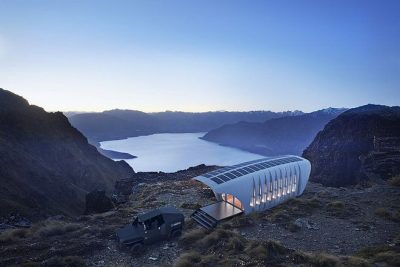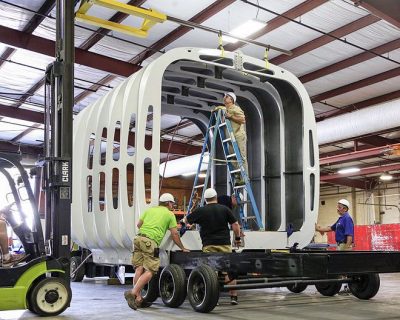A recent article published online by Curbed is highlighting why Knoxville is becoming a power house in the advanced manufacturing sector in Tennessee.
Advanced manufacturing or additive manufacturing is an industry already changing the way the world consumes energy. For example, by 3D printing a car out of composites or light-weight materials that car weighs less which thus improves it’s overall fuel economy aligning with national goals to reach 54.5 MPG fuel standards by Model Year 2025.
The article praises 3D printing in Tennessee stating: “while industrial-capability 3D printing is still in development, this cutting-edge technology has already resulted in clusters of like-minded companies. And one of the most bustling areas for additive manufacturing in the country, and perhaps the world, may just be eastern Tennessee.”
It elaborates by saying Knoxville’s emergence is payoff for government investment in research and development citing Oak Ridge National Laboratory as a hub for government support of advanced manufacturing, and the lab has created a magnet luring innovative manufacturing companies.
Companies such as Local Motors, a firm developing 3D-printing cars, is planning on opening a facility in Knoxville early next year.
“Knoxville provides a unique opportunity,” says Kyle Rowe, an advanced materials engineer at Local Motors. “This is a budding technology corridor, with lots of suppliers and big players. That builds a self-sustaining network. Our supplier is just down the road.”
The innovations in East Tennessee go way beyond the desktop devices that most associate with the technology. In factories in Knoxville and nearby Clinton, companies are printing cars and even homes, living up to the aspirational “Innovation Valley” title applied by local civic boosters.

While the AMIE system created by SOM and Oak Ridge is made to go anywhere, its true legacy may be introducing advancements that reshape home energy usage and production. (Credit: Curbed)
Oak Ridge researchers worked with architecture firm Skidmore, Owings & Merrill (who also masterplanned the city of Oak Ridge, back in the ‘40s) to fabricate a 3D-printed mobile home that looks like a 21st century Airstream. Branch Technology, a local firm that prints modular housing recently collaborated with New York-based SHoP Architects to create Flotsam & Jetsam, a sprawling pavilion displayed at Design Miami last weekend that utilizes bamboo.
The core of the Knoxville’s 3D-printing capabilities come out of the Manufacturing Demonstration Facility (MDF) at Oak Ridge National Laboratory, a cutting-edge research facility with more than 60 metal and polymer printers, as well as a composites laboratory. According to William Peter, who runs the MDF, the lab has spoken with more than 700 entities interested in gaining experience with new technology and collaborating with top scientists.

The plastic “ribs” that form the frame of the mobile home were made via 3D printing and additive manufacturing. (Credit: Curbed)
Related: LeMond Composites announces carbon fiber plant opening in Oak Ridge, brings 242 jobs
Ever since the lab decided to extend its focus on additive manufacturing around 2007, it has refined and expanded the possibilities of 3D printing, from simple plastics to carbon fiber and metal. Now, 40 staff members and dozens of students and partners focus on new ways to create high-performance parts and products.
In addition to Oak Ridge, Knoxville is also home to the Institute for Advanced Composites Manufacturing Innovation (IACMI). IACMI is a multi-state partnership of industry, universities, national laboratories, and federal, state and local governments accelerating the development and adoption of cutting-edge manufacturing technologies for low-cost, energy-efficient advanced polymer composites for vehicles, wind turbines, and compressed gas storage which will benefit the nation’s energy and economic security.
To read the full article, please visit www.curbed.com.
3D printing: East Tennessee’s next manufacturing boon https://t.co/15PTlUqFo1 pic.twitter.com/ZXG2ScZ7x6
— Curbed (@Curbed) December 8, 2016
